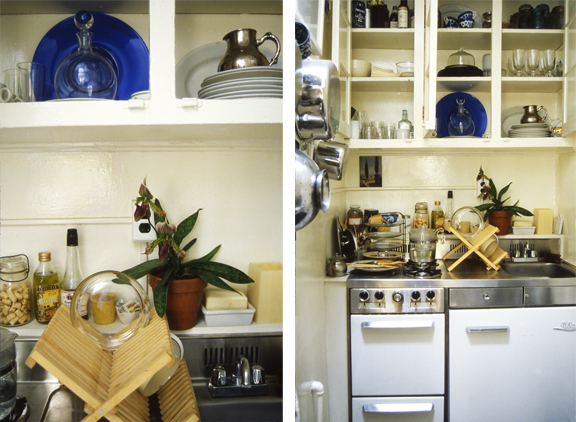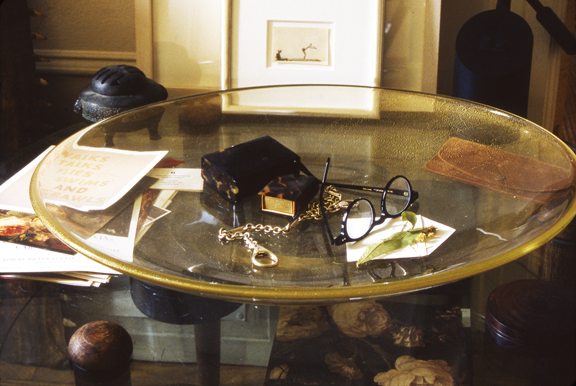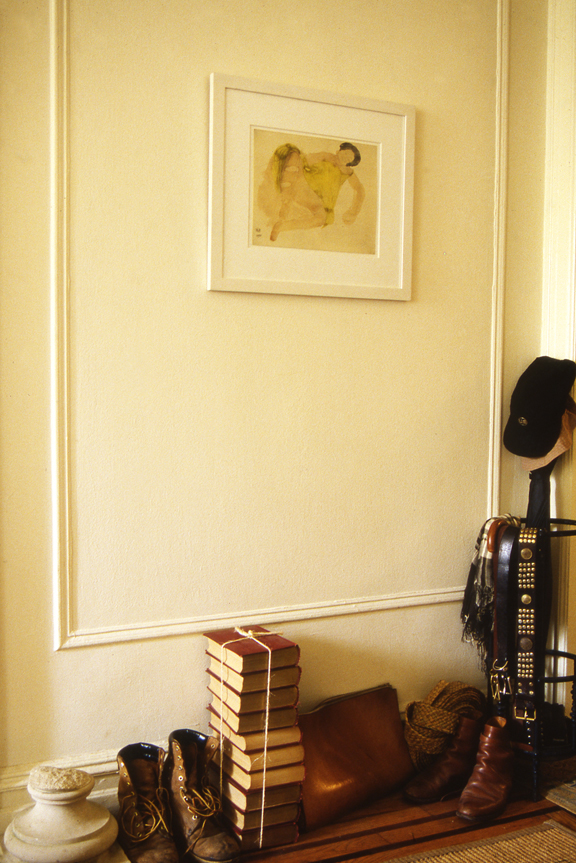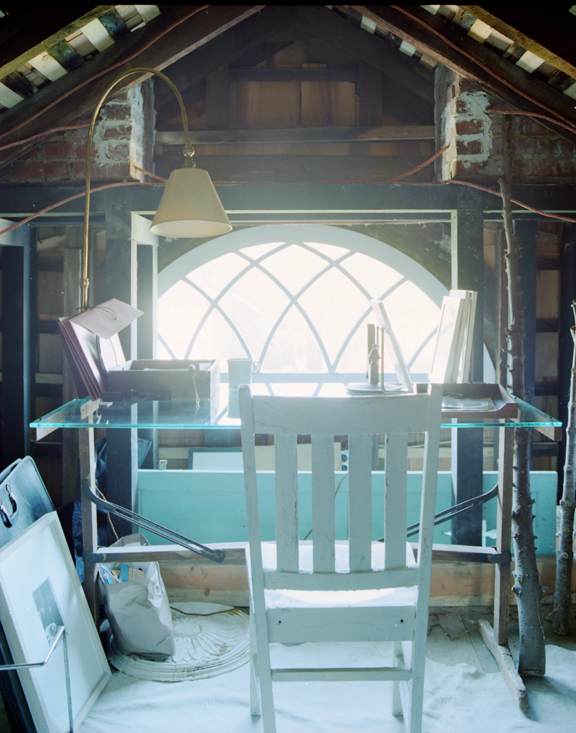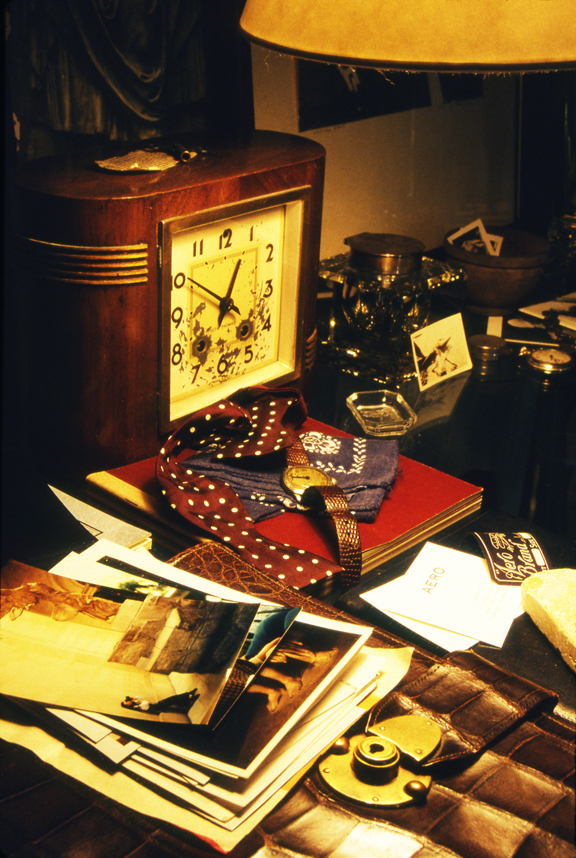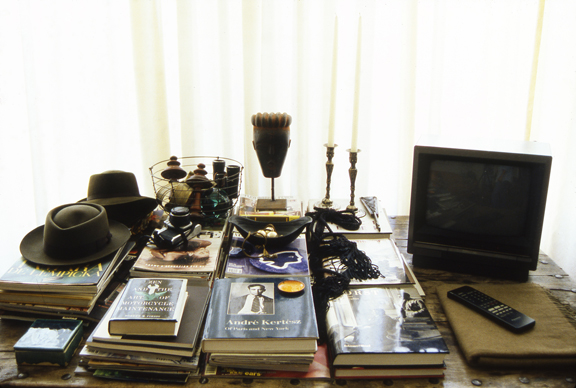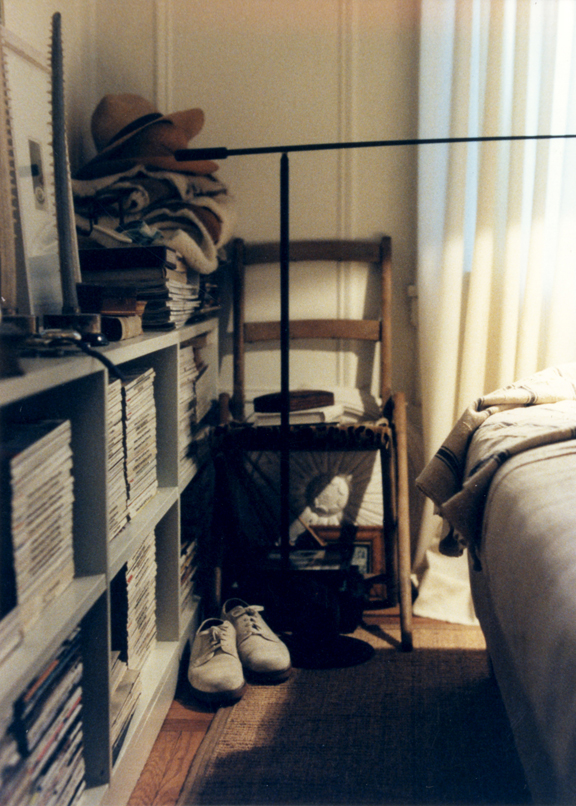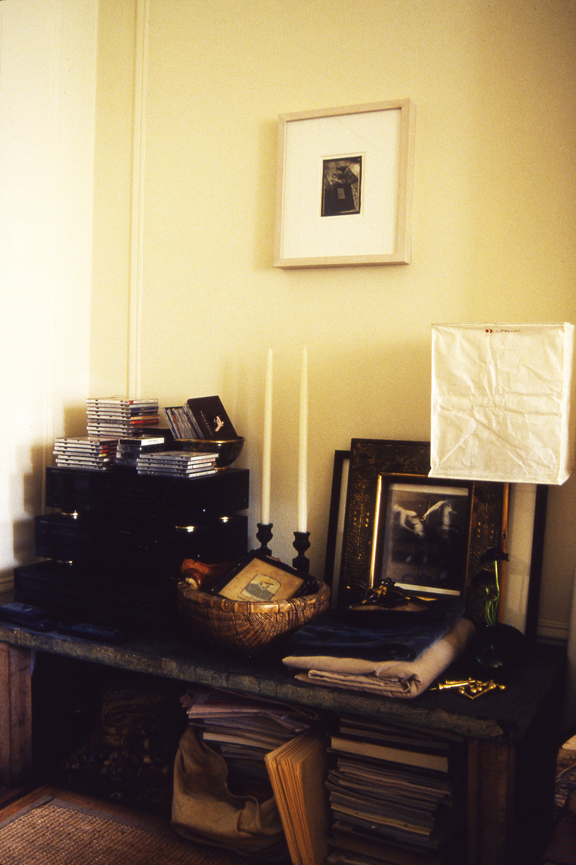My first apartment
The first apartment that I had on my own in New York was a special place for me. It existed during a time of firsts: I was working at Polo Ralph Lauren, and I had just purchased my first house, a small, old Dutch Colonial in Brookhaven Hamlet on Long Island, which I really thought of as my home base. But I still needed a place in the city that I could afford. In many ways this apartment, and these pictures even – all photographs that have never been published – are a first look at the beginnings of my city life and style, where I started to establish key parts of what became Aero a few years later on.
I found this one-bedroom apartment on East 60th Street, on a very nice block known for its antique stores and the restaurant Serendipity. It was a modest space, with a tiny kitchen that had one of those stainless steel counter units with a small stove and refrigerator contained all in one. It certainly all fit into a particular idea of New York for me. To have a small apartment as my base in the city. To adopt a more urban look, more pared down and modern, something different than my little American house with its antiques. To mix rough-hewn and industrial things with slightly finer things; to find elegance in a natural palette and materials that come from the natural world.
Nowadays I live in a 1930s New York apartment building, but this was my first fifth-floor walkup, on that street of antiques. A time filled with good memories and discoveries. I was inventing something new for myself. I was starting to buy special items that cost a few hundred dollars more, that came out of the special case in a shop, or from an auction: white porcelain, clear glass, Venetian glass, old silver and books, vintage and artist photography, modernist ceramics. My first custom upholstery and drapery.
I was interested then, as now, in mixing contrasts: combinations of light and dark, fine and casual, urban and antique. I liked a spare, pale, modern space, but filled with collections of objects and rich, warm textiles. Groupings of white, cream, blue, and brown. The early look of Aero did come out of this quite a bit. Things I did here found their way into the store and then on to interior projects. And many of them are still present in my work today. Certainly the notion of the collected home has stayed and grown with me over the years.
I am constantly reflecting on what makes up the substance of collecting. I’m always looking for things that inspire and charm, and for what it means to assemble a group of things and enjoy them. I’m not one to tuck pieces away once they’re gotten. Much of the pleasure is in discovering how your art, furniture, and treasures will live together – whether certain pieces are meant to stay in a formal arrangement or move and recombine over time. And, not everything has to be of the same moment, or importance, when you build a collection. It’s the sum of pieces that are appreciated, added to, even upgraded over years, from different levels of knowledge and resource. They all relay a personal history; and that makes a home authentic.
Some favorite recollections:
- The funny little square kitchen was very endearing to me. It had, along with the stainless steel cook-space, a vintage wood and glass cabinet on the wall where I kept the beginnings of my antique glass and kitchenware collections. And on the adjacent wall, there was painted pegboard for storage that reminded me of the original kitchen from Julia Child’s TV show, with the painted pegboard that had the outline of her pots and pans. I still have the large jar from that apartment that I used to hold cat food, and the Pyrex glass percolator on the stove.
- I’d bought a set of English diaries from the early 1900s, thirty years or so recorded in these beautiful books that were absolutely identical except for variations in the color of their leather bindings. They all had elegant gilded papers; they were these special, preserved, obviously cared for artifacts. The author religiously wrote every single day. Some days were as simple as: “Rained today”. I found the discipline of that daily writing to be really inspiring and compelling. There was a living voice to me in these wonderful vintage books.
- In the center of the living room I put an antique Heriz carpet that had belonged to my grandparents. It was from a group of six or seven carpets that had come out of my dad’s childhood home. I’d found them stored away in our family’s summer cottage, hidden in a cabinet under the eaves of one of the bedrooms, nearly forgotten. My dad let me take them; I still have them all today. This one was my favorite for the blues in it, with brown and just a little bit of red; just a beautiful pattern. It had been a hallway carpet, and I loved how it was universally worn all over, like a pair of broken-in favorite jeans or a vintage jacket where the wear and the patina are perfect, not too much or too new. The carpet is in storage now, and I miss it. One day I want this to be the center of a room again.
- The sofa was my own first piece of custom-made upholstery. It is the classic Chanel sofa, made by Jonas Upholstery, one of the upholsterers that I’ve worked with for years. Jonas’s version is one of the truest, nicest interpretations of this sofa, beautifully proportioned, with large, spaced nailhead trim. I covered it in Bisonte naked vegetable-tanned leather. The undyed leather takes on a patina over time, like a leather bag or wallet, starting out in a pinkish color, and turning deeper and deeper honey in color. This sort of wonderful natural leather was one of the things I was discovering around that time. It was and still is the leather that I use to make up our Aero tote bags for the store, in a changing assortment of all vegetable-dyed colors that give a range of beautiful natural tones, from brown to blue to brick.
- The patchwork pillows on the sofa are pieces that I made myself, out of scraps of very special Brunschwig & Fils Tiger and Leopard silk velvet. One of the upholsterers in the workroom knew that I loved this velvet, so he saved the cuttings when he had them, and I collected them until I had enough to make the pillows. This amazing velvet is still hand-woven at only about one inch a day, on a traditional narrow loom that is over a century old. I think at that time it cost somewhere around $1000 a yard; now I believe it is nearly double that, one of the few Old World, European treasures still being made in the original way. I saddle-stitched the pieces together in narrow strips with diagonal and straight seams, and then I would sew those strips together to make one bigger piece of fabric. I actually prefer the patchwork effect that I ended up with. I was using something luxurious in an easy and casual way. And pieced together like this, light moves with the various directions of the nap on each strip, especially enhancing the luster of the silk.
- The desk by my kitchen was something that I put together, with a crude, old folding stand that I found in the garage of my house on Long Island. I think the former owner had used it for garage sales. I had a piece of glass cut for it, with holes drilled along the ends and nice slotted brass screws attaching it to the table. At that time in the world of Ralph Lauren, I was seeing different kinds of glass-topped tables, with sawhorse and trestle bases in chrome or nickel. This was my take on that look, with a much more rustic table base and something more industrial to the gadgetry attaching the glass to it. It was my own invented modern and old thing. Here I paired it with a Mission desk chair that I upholstered in deerskin with nailhead trim. That chair is as solid as can be, but with its curves it also looks like a French Deco chair in a modern way. I love this odd juxtaposition of an American chair with a European look. When I left this apartment, sadly I didn’t have another place for the desk. Currently it is set up in the attic of my house on Long Island, by the window at the top of the stairs.
- One of the least attractive things about the apartment was the window wall in the living room, with a conspicuous air conditioner, and to be honest, the spot where I kept the cat-litter box hidden. I had an idea to make one long continuous drape that would cover all that, on a long brass rod with simple hidden flanges that held it to the wall. I had found this beautiful, lightweight, Japanese habutai silk through my time at Polo, and I did three panels that opened at the windows, covering the whole wall but still letting in light. I also did a single drapery rod for the bedroom, and for that I chose cream wool challis that I still use regularly in design projects today, especially in modern residences. When I opened Aero, the idea of drapery in this long, tall expanse was a perfect, practical solution. I liked the hand of the Japanese silk, so I used that again, and it became one of the defining elements of Aero from the start.
- The Indian daybed-table in the living room became a special moment like a fireplace mantel at the end of a room. I had the sofa first and my desk next, and I needed a third part to complete the room. I found and purchased the daybed for that spot. I’d gone to a benefit auction in Bellport on Long Island and there it was; and though I’d seen other ones before, this piece had the most beautiful patina and color in graying, natural tones, with iron nailheads and really fantastic decoration. It was one of the first auction antiques that I purchased for myself, besides things I had gotten at country auctions as a kid. Afterward, the Indian daybed became my desk at Aero for many years.
- When I moved into this apartment I brought the long, low cubby bookcases for the bedroom with me, and I painted them white to hold all my design magazines. This was something that a lot of editors did, and there was a time when saving all those publications was really important for me. These days at home I sort through my magazines and keep just tear sheets, except for The World of Interiors, which I don’t ever seem to tear apart.
In the closet is a piece of art that I made and presented in a sculpture class when I was at the Cooper Union. At the time I was working with appropriating text and pictures. I would tear small squares of print or photography, mostly out of The New York Times, always around the same size, and glue one fragment to the center of each page in a notebook. They were abstractions in a sort of visual journal. This page was one that I liked for its simplicity and elegant typography. It says “NECKLACES BRACELETS EARRINGS RINGS”, and it came from a Buccellati ad, I remember. It was a design commentary, not about the jewelry, but about the beauty of the graphic design of the type, in this isolated, abstract fragment. I’ve always loved it, and even as I’ve collected many other artworks, it’s a piece that remains important to me. I’ve kept it all these years, and now it hangs in the dressing hallway in my current apartment.


